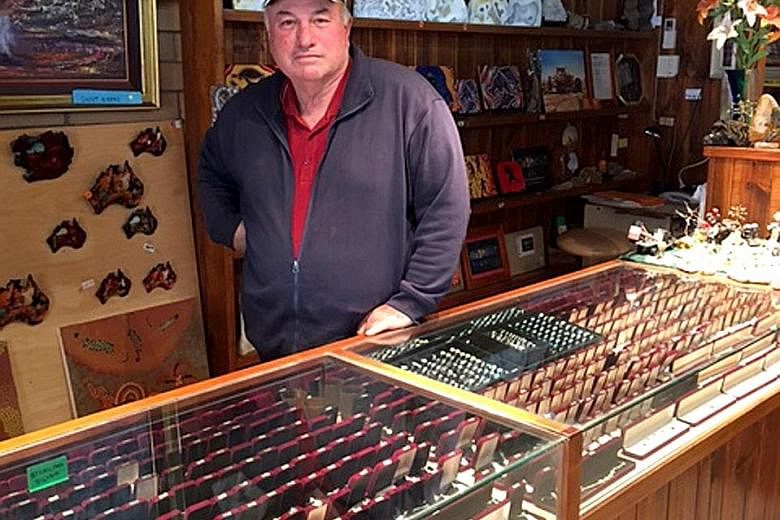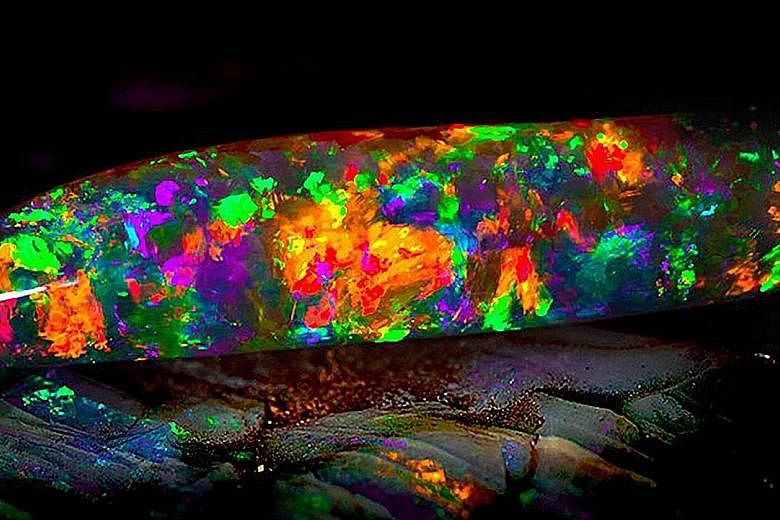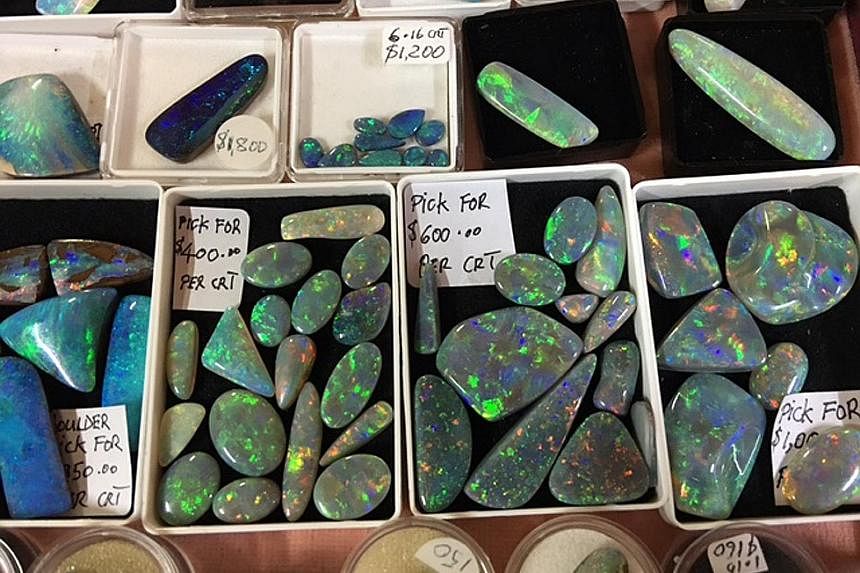Thirteen years ago, opal miner John Dunstan was digging in an old shaft in a remote region in central Australia when he struck it lucky.
Using an excavator near his home town of Coober Pedy, he unearthed a 6cm stone that was to be one of the most spectacular opals ever discovered.
He eventually sold the stone, called the Virgin Rainbow, three years ago to the South Australian Museum in Adelaide. It is estimated to be worth over A$1 million (S$1.03 million).
But Mr Dunstan is the first to admit that it has been a long time since anyone in the opal mining territory around Coober Pedy has come across another "rainbow".
"The prices are soaring because we can't find the opals," he told The Sunday Times. "Most of the fields close to Coober Pedy have been worked out."
Australia is by far the world's largest producer of precious opals and accounts for about 90 per cent of the global supply.
The lack of big finds in recent years - combined with increased demand from China and India - has caused a surge in prices.
The shortage of quality stones has raised concerns about the future of a once-thriving industry that has long attracted get-rich-quick prospectors from around the world to small Australian towns.
Veteran miners such as Mr Dunstan say there is little doubt that big finds are waiting to be uncovered.
They are hoping that a new wave of prospectors will be lured by the soaring prices, which have doubled in the past 18 months to about A$12,000 per carat for high-quality gems.
"We desperately need a new opal field found in Coober Pedy to supply the market," Mr Dunstan said.
While Australia exports an estimated A$85 million worth of opals a year, the industry is believed to be worth hundreds of millions of dollars because it attracts large numbers of domestic and international tourists to outback areas.
Opals, a hydrated form of the mineral silica, are typically mined by digging tunnels into the ground, spreading out horizontally to try to follow potential seams of so-called "opal dirt" which may contain intact gems.
The Lightning Ridge fields in the state of New South Wales, about 720km north-west of Sydney, have one of the world's largest supplies of black opal. This is the most precious form of opal because the dark body enhances the depth of the patchwork of bright colours.
But, as in Coober Pedy, the stones are proving elusive.
Australian opal exporter Damien Cody of Cody Opal said there were growing concerns that opals might prove to be a "finite resource" with only 20 to 30 years left for future finds.
"The normal rules of supply and demand don't necessarily apply in the gem industry," he told SBS News last month.
"So as a stone becomes very rare, people see less of it. There's less hype out there in the gem-buying world and it can disappear off the gem -buying map."
The strong international demand and rising prices have helped to increase interest from prospectors.
The state authorities in South Australia have granted 84 mining permits since last year to prospectors wanting to mine in the Coober Pedy fields, compared with 63 in the previous year.
But this is still a drastic change from the heyday in the 1970s and 1980s. There are now about 100 active miners in the area, compared with as many as 800 in the 1980s.
Mr Dunstan, who grew up in the region and has been mining for more than 50 years, said prospectors now have to travel further afield - more than 50km from the town - or try to blast through thick rock near local mines to find the stones.
"There are grounds where the big opals have been found but they are covered with rock. Not many people want to drill through rock."
He added: "I believe there are still multimillion-dollar runs here but they are so hard to find."



